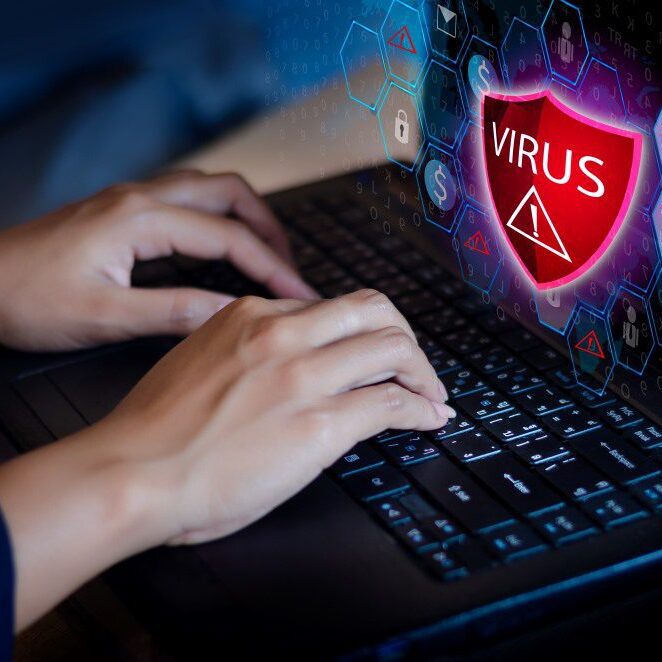Virus attacks can significantly damage your data and systems, leaving you vulnerable and potentially losing crucial information. Knowing how to recover data effectively after such an attack is essential to minimize damage and restore operations.
Immediate Actions After a Virus Attack
Disconnect from the Network
Immediately disconnect the affected system from the network to prevent the virus from spreading to other devices. This helps contain the damage and isolates the infected system for further investigation.
Assess the Damage
Evaluate the extent of the damage caused by the virus. Identify which files and systems have been compromised. This initial assessment helps prioritize recovery efforts and determine the best course of action.
Do Not Use Infected Devices
Avoid using the infected devices until they have been thoroughly cleaned and secured. Using compromised systems can lead to further data corruption and security breaches.
Steps for Data Recovery
1. Use Antivirus Software
Run a comprehensive antivirus scan using reliable software to detect and remove the virus. Ensure the antivirus definitions are up-to-date to effectively identify and eliminate the threat.
2. Restore from Backups
Restoring lost data from backups is one of the most effective ways to recover it. Ensure that your backups are recent and not infected. Follow these steps to restore from backups:
- Identify the most recent clean backup.
- Verify the integrity of the backup data.
- Use the appropriate backup software to restore files to their original locations.
3. Data Recovery Software
If backups are unavailable or incomplete, consider using specialized data recovery software. These tools can scan your system for recoverable files and help restore them. Ensure that the software is reputable and specifically designed for virus recovery scenarios.
4. Professional Data Recovery Services
For severe cases where data recovery software is insufficient, seek assistance from professional data recovery services. These experts have advanced tools and techniques to recover data from heavily damaged systems.
Prevention Measures
Regular Backups
Implement a robust backup strategy to ensure regular and reliable backups of all critical data. Use both on-site and off-site storage solutions to safeguard against various threats.
Up-to-Date Security Measures
Keep your antivirus and anti-malware software up-to-date. Regularly update all system software and applications to protect against known vulnerabilities.
Employee Training
Educate employees about the importance of cybersecurity practices, such as avoiding suspicious emails and websites, using strong passwords, and recognizing phishing attempts.
Implement Network Security
Use firewalls, intrusion detection systems, and other network security measures to protect your systems from external threats. Regularly monitor network activity for any unusual behavior.
Steps for Data Recovery After a Virus Attack
Taking swift and decisive steps is crucial when recovering data after a virus attack to minimize damage and ensure the integrity of your information. Below is a detailed chart outlining the essential steps for effective data recovery:
| Step | Description |
| Disconnect from the Network | Prevents the virus from spreading to other systems |
| Assess the Damage | Identifies which files and systems are compromised |
| Do Not Use Infected Devices | Avoids further data corruption and security breaches |
| Use Antivirus Software | Detects and removes the virus |
| Restore from Backups | Recovers data from the most recent clean backup |
| Data Recovery Software | Scans for recoverable files and helps restore them |
| Professional Data Recovery | Advanced tools and techniques for severe cases |
| Regular Backups | Ensures reliable and frequent backups of critical data |
| Up-to-Date Security Measures | Protects against known vulnerabilities |
| Employee Training | Educates about cybersecurity best practices |
| Implement Network Security | Uses firewalls and monitoring systems to detect and prevent threats |
Contact California Computer for Expert Data Recovery Services
Recovering data after a virus attack requires prompt action, effective tools, and sometimes professional assistance. By following the steps outlined above and implementing strong prevention measures, you can minimize data loss and enhance your overall cybersecurity posture.
For recovery needs, consulting with a professional data recovery service ensures the best chance of restoring your valuable information.
Don’t risk losing your important data. Reach out to California Computer today for professional data recovery services. Our experts are equipped to handle even the most challenging recovery scenarios, ensuring you get your valuable information back. Contact us now to safeguard your data and strengthen your cybersecurity defenses.
FAQs
1. What should I do immediately after a virus attack?
Disconnect the affected system from the network and assess the damage.
2. Can I recover data without backups?
Yes, you can use data recovery software or professional services if backups are unavailable.
3. How can I prevent future virus attacks?
Regularly update security measures, perform frequent backups, and educate employees about cybersecurity.
4. When should I seek professional data recovery services?
Seek professional help if the data loss is severe and cannot be recovered using standard methods.
5. What is the role of antivirus software in data recovery?
Antivirus software detects and removes the virus, preventing further damage and aiding in recovery.
6. Why is it important to avoid using infected devices?
Using compromised systems can lead to further data corruption and security breaches.
7. How do I verify the integrity of my backups?
Regularly test backups by restoring sample files to ensure they are complete and not corrupted.
8. What are some reputable data recovery software options?
Research and choose software that is specifically designed for virus recovery scenarios and has good reviews.
9. How can employee training help in preventing virus attacks?
Educated employees can recognize and avoid potential threats, reducing the risk of infection.
10. What network security measures should I implement?
Use firewalls and intrusion detection systems, and regularly monitor network activity for unusual behavior.

